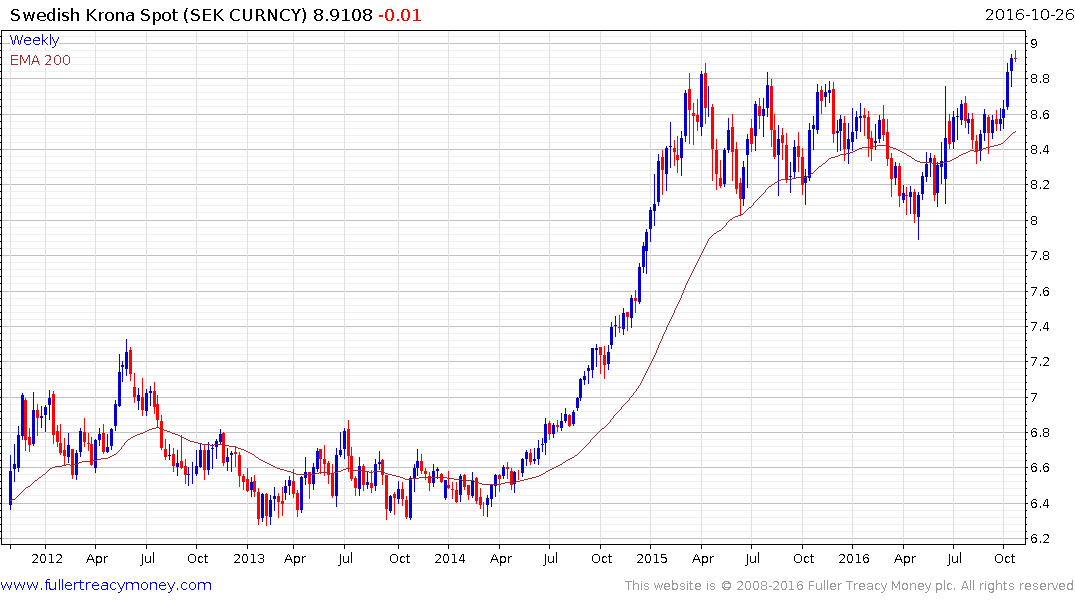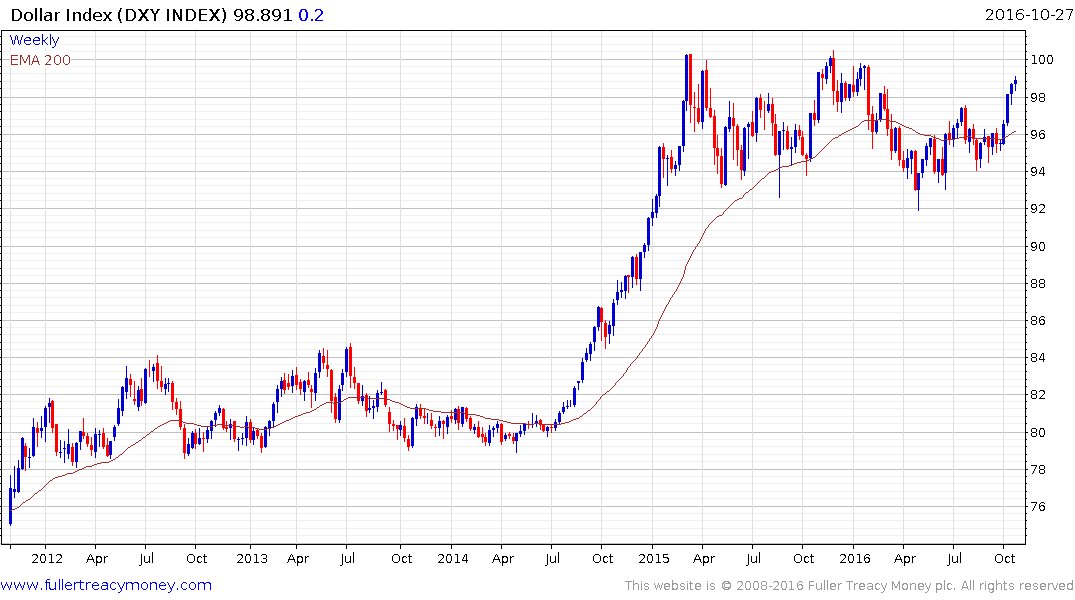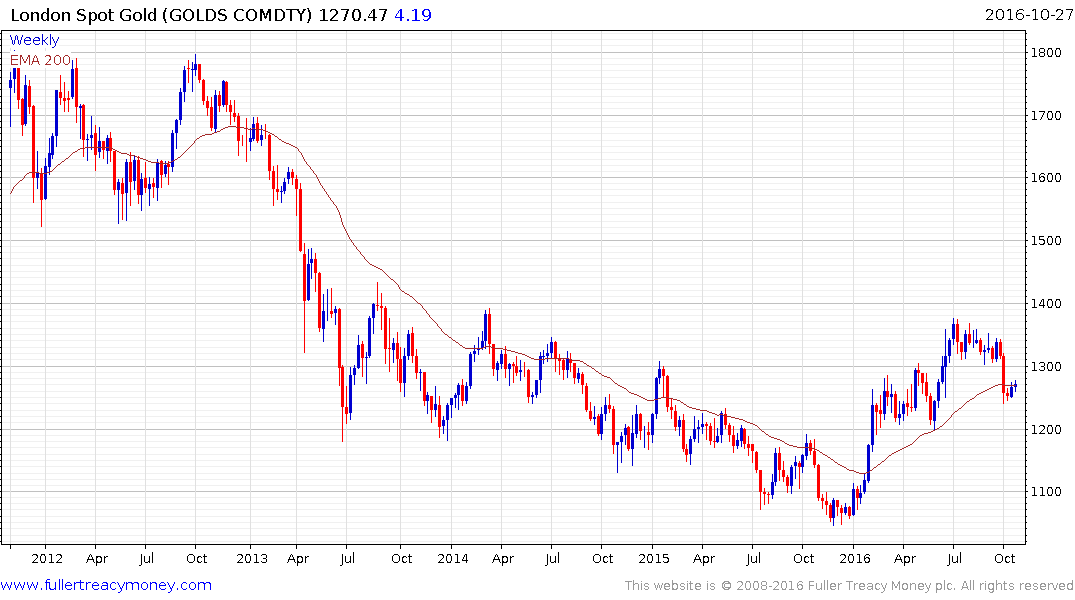Swedish Krona Plunges as Riksbank Signals More Easing to Come
This article by Johan Carlstrom and Amanda Billner for Bloomberg may be of interest to subscribers. Here is a section:
Nordea’s chief analyst in Stockholm, Andreas Wallstrom, said he still expects more easing by the Riksbank, "including a rate cut” to minus 0.6 percent in December. “The government bond purchase program is forecast to be expanded by 30 billion kronor ($3.4 billion), equally distributed between government bonds and index-linked bonds,” Wallstrom said.
“The revised repo rate path delivers enough softness to keep the krona on the weak side,” said Knut Hallberg, an analyst at Swedbank AB in Stockholm. “It shows a bigger probability of a cut.”
Some analysts had predicted the Riksbank would announce more easing already on Thursday after inflation missed the bank’s forecasts by a wide margin last month. The annual inflation rate slowed to 1.2 percent in September after peaking at 1.6 percent at the start of the year.
The Riksbank also cut its inflation forecast for next year, from 1.8 percent to 1.4 percent, and for 2018, from 2.6 percent to 2.2 percent. It predicted that unemployment will average 6.7 percent next year, while economic growth will slow to 3.3 percent this year and 2 percent in 2017.
“I don’t really see the logic of making monetary policy more expansionary,” since the economy is doing well, Bergqvist said. Still, “it’s a good tactic that the Riksbank keeps the door open,” he said.
The video interview within the above article is quite illustrative of the complacency of central banks when married to a narrowly defined measure of inflation. Riksbank Governor Stefan Ingves quite clearly admits that a bubble is expanding in the Swedish property market and in the same breath says it is not within the remit of the central bank to do anything about it. In fact, like other central banks asset price inflation is viewed as a positive despite the fact household debt is at a record and the bubble is still inflating.

The Dollar broke out against the Krona last week and extended the move this week. No one at the Riksbank will be mourning the currency’s weakness since this is exactly what today’s statement was designed to achieve. A clear downward dynamic would be required to check momentum beyond a brief pause.
Broadly speaking the actions taken by the Riksbank are symptomatic of the conundrum facing other central banks. Having fully endorsed the view that inflation is always and everywhere a monetary phenomenon they have failed to understand they continue to deal with the after effects of a credit crisis and much of the new money created has gone to servicing debts, rebuilding balance sheets and rich profits for asset holders.
There are really only two ways to foster inflation. Write off the debts, then stimulate to raise asset prices which would make the holders of depreciated assets whole. Alternatively depreciate the currency to unimaginably weak levels which erodes the debt by allowing liabilities to be met in nominal currency at a fraction of the original value.
The third route pioneered in response to the credit crisis was for little debt to be written off and for the state to absorb almost all liabilities. Central bank balance sheets exploded and asset prices have accelerated. In the most desirable areas property prices have exceeded their previous peaks.
The US consumer which accounts for the majority of economic activity has rebuilt its balance sheet better than other areas because the banking sector was forced to write down debt and because the foreclosure crisis was allowed to run its course. Even so the liabilities taken on by the Fed are enormous. Beyond rolling over maturing debt and extending the duration of the portfolio the Fed has not told us what it plans to do with its dominant position in the Treasury and mortgage bond markets. The challenges for Europe and Japan are even larger.
Negative rates have been something of a tipping point because central banks have been forced to question the wisdom of their actions. As inflationary pressures build not least because of wage demands due to higher living expenses and an uptick in Chinese producer prices, the question of what to do with all the debt on central bank balance sheets could become more urgent.

The Dollar Index is comprised of Euro (57.6%), Yen (13.6%), Pounds (11.9%), Canadian Dollars (9.1%), Swedish Krona (4.2%) and Swiss Francs (3.6%). Considering these represent the countries with either the greatest threats from deflation and or developing housing bubbles we can reasonably ask whether the Index is appreciating because of Dollar strength or because almost every other major currency is engaged in devaluation.

Gold prices have been off the radar for many investors for the last six months but in an environment where central banks are actively targeting lower currencies the allure of an asset than cannot simply be lent into existence is likely to be burnished. Gold and most of the other precious metals are now trading in the region of their respective trend means so if demand dominance is going to be reasserted this is the area where we might expect it to occur.


